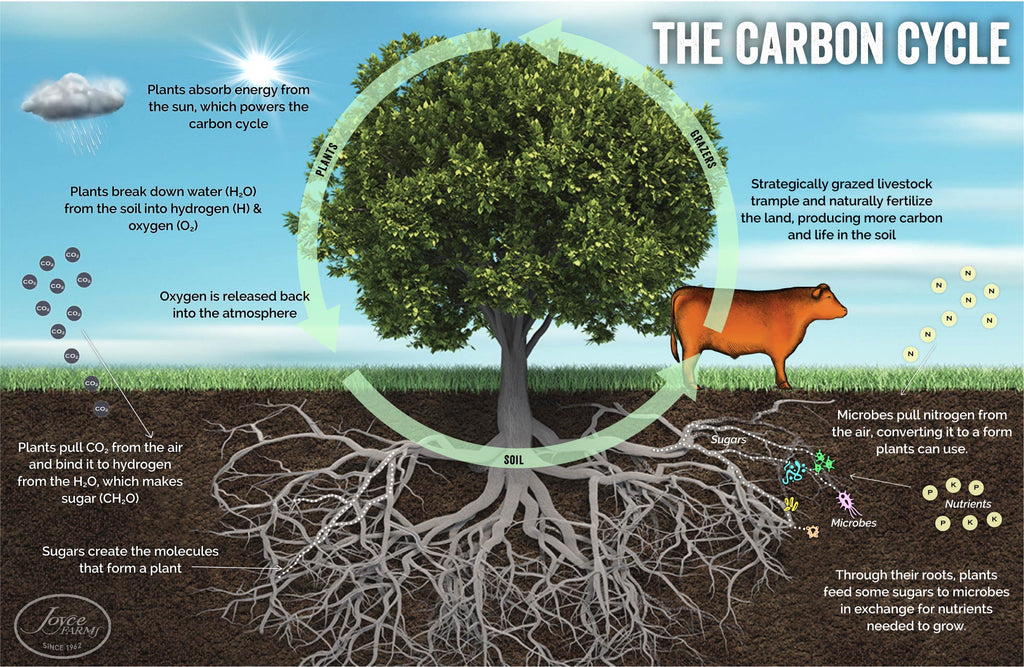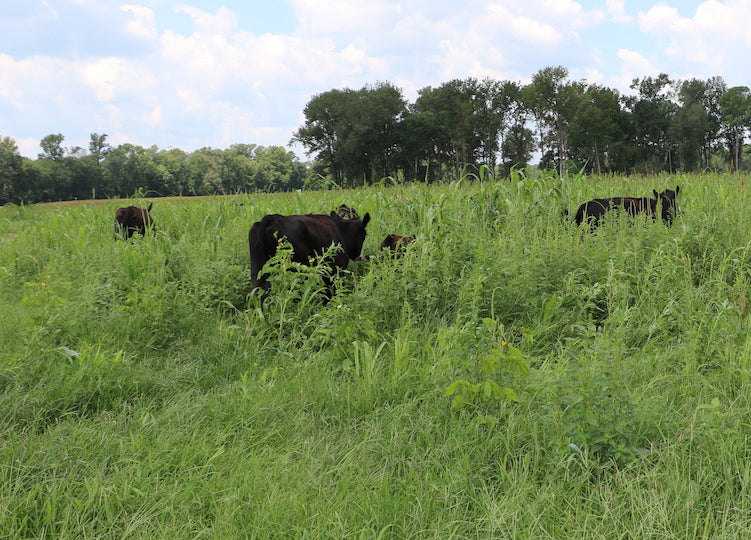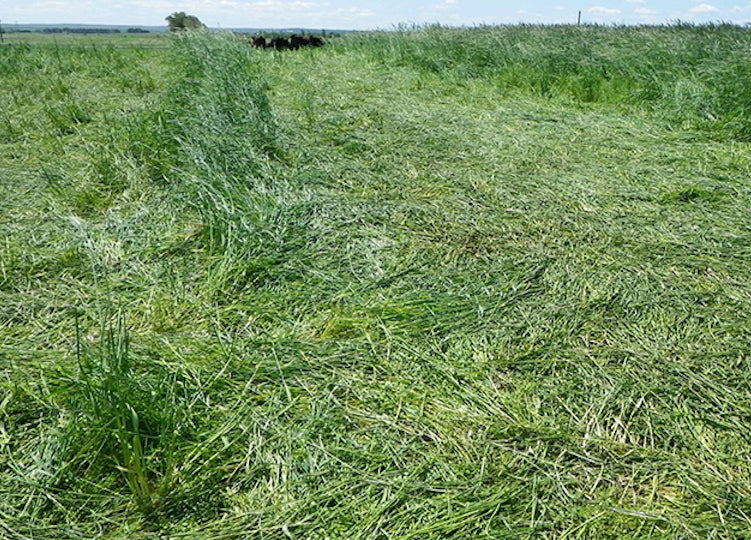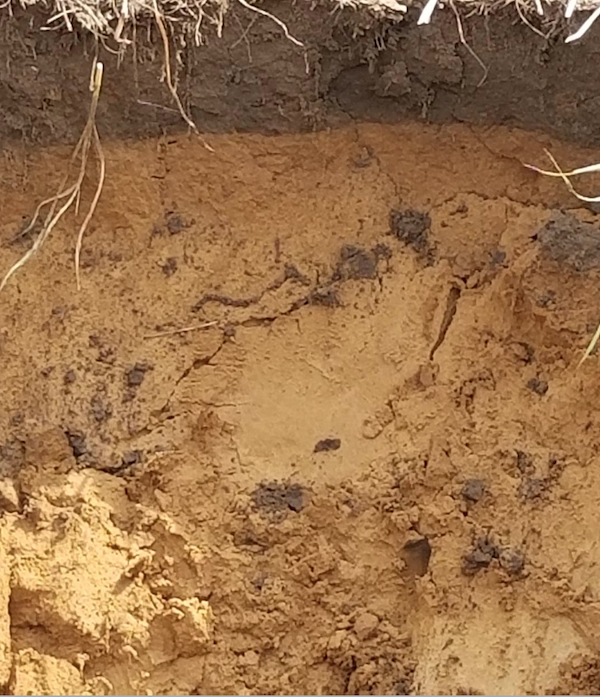July 25, 2019 0 Comments
We are all familiar with erosion and the soil’s ability to wear away, but few people associate soil with growing upward. The truth is, just like we can use poor farming methods to cause erosion of topsoil, we can use regenerative farming methods to literally grow new topsoil!
Regenerative farming depends on an active and balanced carbon cycle, through which plants, soil, and grazing animals create a circle of life that is powered by sunshine. When the carbon cycle is active and balanced, there is a continuous flow of new, carbon-rich organic matter to the soil.

Plants capture energy from the sun and carbon dioxide from the atmosphere. Next, they use water and minerals from the soil to produce sugars. Some of those sugars are shared with soil microbes in exchange for mineral nutrients. Those root exudates add carbon-rich organic matter to the soil. Grazing animals keep the cycle going (more on that in a minute).
The question is - when all that new, carbon-rich organic matter is added to the soil, where does it go?
Soil is porous. You may naturally assume that any added organic matter would fill the existing pores or holes in the soil, making it more and more solid. If this were true, and you continued to add organic matter, at some point you would essentially be trying to farm on a slab of rock-hard granite.
The good news is, that’s not how it works.
In reality, soil rich in organic matter is more like a sponge than a slab of rock. It's more porous and holds more water. Carbon-rich soil is not rock-hard, but soft under your feet and easier to penetrate with a shovel. That’s because the soil volume has expanded upward, with the help of Mother Nature.
Here's how it happens:
Through regenerative farming practices, animals graze and naturally fertilize an area of land, trampling plants and other organic matter on the surface as they do.


Worms and dung beetles feed on the trampled matter and the manure. They “churn” what’s on the ground and what’s underneath, creating displacement of soil material from below the ground to above it.

Essentially, they excavate the soil from below the ground and put it on top. In the process, new void spaces, or pores, open up in the soil. This new porosity means the soil can hold more water and give access to flowing nutrients.
This is also why you may find a latent seed bank waking up and starting to grow in your soil, long after you thought the topsoil was eroded. This “churning” can carry seeds up near the soil surface, where they can germinate and grow.
The activity of the grazing animals also stimulates the soil microbial population, especially mycorrhizal fungi.

Mycorrhizal fungi produce biotic glues that bind the tiny soil particles together to create much larger particles, opening up significant pore space for water and oxygen infiltration and movement.
So if both organic matter and porosity are being added, and the soil can’t grow down or sideways without compacting, it can only be doing one thing - growing up!
Many experts and even textbooks will tell you that it takes 1000+ years to grow an inch of topsoil, but now we know we can do it much more quickly with regenerative agriculture. Farmers and grazers can add between 0.5% - 1.0% organic matter in a single year.
One of our farmers, Adam Grady, added 3 inches of new topsoil on his farm, in just 2 years!
The photo below was taken on his farm, where our Heritage GOS pigs and some of our Heritage Aberdeen Angus cattle are raised. That line of color separation you see is called the carbon line. The darker soil at the surface is new topsoil that has been grown from increased soil organic matter!

May 28, 2025 0 Comments
Follow the full journey of our Poulet Rouge® Chicken—from eggs in France to 12 weeks of pasture-centered care on Carolina farms.
May 16, 2025 0 Comments
Another AA for Joyce Farms! Our latest food safety score highlights the pride, care, and commitment that goes into every product we produce.
